#(at least for things that fed into major plot beats and character arcs)
Explore tagged Tumblr posts
Text
What does it speak to her character that the person she had a "benign possession" with was going to force Mythal on her daughter by stripping her of her free will and also used her grandson as a soul jar
#veilguard critical#not had the energy to organize the rest of my clips but found this one i took on a whim#the fact that he says “if” it was a benign possession feels deliberate#like “hey. hey origins players we know what we wrote flemeth and mythal as before”#“just tell yourselves its dramatic irony and don't say shit for the new players”#but i don't think dramatic irony works as an excuse if you've made it so a huge portion of your players don't recognize the irony#and it doesn't meaningfully contribute to any of the plot#idk I feel like from the Silent Grove onward they've always been trying to backpedal making Flemeth into a bodysnatcher#unfortunately#but i'm of the opinion that if you regret writing something it's very bad to just#hope and pray your audience forgot the earlier installments#(at least for things that fed into major plot beats and character arcs)
16 notes
·
View notes
Text
Thoughts on Even More Games
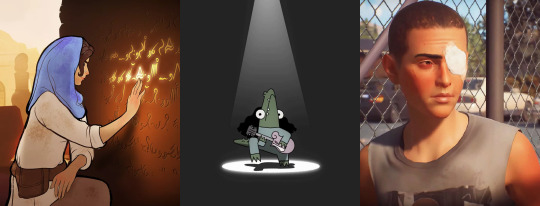
[vague, unspecific spoilers for Heaven’s Vault, Later Alligator, and Life is Strange 2]
Thoughts on Heaven’s Vault
Heaven’s Vault is a game about archeology, which means it’s also a game about incompleteness. This is very clever. Inkle - also the developers of 80 Days, which I will play someday! - specialize in deep narratives that can be explored many, many ways, allowing for a lot of player choice. You make a lot of small decisions - do you share a discovery with the trader in exchange for a valuable item, or hide it so he doesn’t plunder it? do you go looking for your missing friend, or let her stay missing in case there are people trying to follow you to her? These all have their own little arcs and resolutions, and there are so many of them, and so many ways they can play out, that the game can never be played the same way twice. The overall story begins and ends in the same place and theoretically hits the same major beats, but the journey is tailored broadly and finely to each player; it’s a style of design Aaron A. Reed refers to as “not... a branching tree but a braided rope.”
Making a narrative about archeology is how you dodge the exponentially complicated nature of that design: if there are dozens of locations, characters, plot threads, bits of color, which can be engaged with at many points in time, or ignored, or dropped by the player halfway through, how do you avoid telling a story full of gaps and dead ends? Well... you don’t. Having only partial information and having to infer the rest is what archeology is.
The protagonist of Heaven’s Vault, Aliya, is digging up the secrets of an ancient civilization, having been sent by her academy to find a researcher who’s gone missing, and stumbling into his incredible discovery. Everywhere she goes, there are holes: she has partial understanding of the researcher’s journey and motives; he, in turn, had partial understanding of the mystery he was uncovering, and Aliya has only fragments of his knowledge; the ancient texts she translates are usually fragments of larger works, and she is guessing at the meanings of many of the words; the game’s constantly updating historical timeline has entire centuries with nothing but question marks. Aliya arrives in a new location and wonders aloud to her robot companion about what this place was, when it was founded, when it was abandoned, how her predecessor found his way her and where he went next and what he took with him.
The constant feeling of discovery - of unearthing - is magnificent. Site after site, I asked, “What is this place?” Always thinking, if the eventual answer is any good, this is going to be one of the best games I’ve ever played. And, in the end, it doesn’t give you an answer, it just give you enough to make the story feel complete. It answers by not answering.
Also, translating alien texts is just extremely my jam. I’m the weirdo who enjoyed the ending of Arrival but secretly wished the whole movie had been about xenolinguistics like the first half. I guess Inkle felt similar.
The game’s by no means perfect. I think I enjoyed the sailing between worlds more than most - it’s slow, but very pretty - but it’s going to discourage a replay. I don’t think the relationship between Aliya and her robot, Six, ever gets terribly interesting. Some of the archeology is a little too obviously game-y - sail around, wait to find a random ruin, beam Six down to grab an ancient doodad, translate a bit of text, lo and behold it’s from one of the sites you’re looking for and it’s narrowed your search radius somehow. (It gives Star Trek explanations the first few times - e.g. “it has radiation that only exists in one part of the nebula” - and then stops bothering.) And the game sags a little in the middle; it could’ve hacked out 3 or 4 dig sites and still given me the same experience.
But, all told, there’s magic in it, and it just feels good to be there. Do not sleep on this one.
Thoughts on Later Alligator
There’s not a ton to say about this game except that is charming as hell. Lindsay and Alex Small-Butera have build a beautifully animated world of cute alligators, one of whom is having a birthday party where he’s convinced he’s going to be murdered. He wants you to run around getting information out of everyone who’s going to be there, which you get by completing minigames. It’s a cast of weird and funny characters with weird and funny dialogue and there’s not much more to it than that.
The design can be a little frustrating. Some minigames, if you lose, you don’t get to try again. Some are annoyingly finicky. You need to complete them all to get the true ending, which means, in my case, playing the game three times to complete all the bits you missed or got locked out of. The ending was a little different each time, so it wasn’t a total wash, but the game’s on a timer that only advances when you play a game or take the bus, and once you’ve completed most of the games there’s a lot of traveling back and forth from one nowhere to another just to advance time to the next unskippable plot beat.
(It’s also a little unclear what you’re missing as you try to get the final ending, as some of the ongoing puzzle are optional.)
But I can’t get mad. The game is too damn cute! Each character is lively and unique, with tons of personality, and the dialogue is just clever enough not to fall into empty adorkability.
It good.
Thoughts on Life is Strange 2
Somewhere, early in the development of Life is Strange 2, some Dontnod employee wrote in a design document “Episode 4 - cult?” (but in French) and nobody told them “no.”
I will not forgive them for this,
After twenty minutes of LiS2, I was ready to yell at everyone who had reported it was boring. It has one of the most powerful, gut-punching openings of any game I’ve played in recent memory. And all through the first, second, and third episodes, I was in love. Unlike Before the Storm, this was its own creature, willing to make dramatic departures from the original game’s template. Instead of controlling a character with supernatural powers, you play as the superpowered character’s older brother. The one with the magic is a 9-year-old, unable to fully understand or control his abilities, suffering a recent trauma, and needing to be guided through a dangerous and racist world. All the ambition missing from Before the Storm is back, and this time the animation isn’t creepy and the writing is wildly improved (thanks to some journeyman script work from Fullbright’s Steve Gaynor) and I even have a computer able to play it on higher graphical settings.
But nothing good lasts.
Everything good about the series screeches to a halt in Episode 4, the one where some asshole said “cult?” and didn’t get a Nerf football thrown at their head. And it’s not just that it’s a terrible idea; it’s actually sort of amazing how much the game relies on an alchemy of plot, tone, theme, and writing, and how a slight imbalance can throw the whole thing off. Episode 4 has scene after scene that are powerful in their conception - brothers reunited after a violent rift; a boy having his first conversation with his estranged mother in nearly a decade; getting interrogated by the feds for a crime that can’t even be explained by physics - fall flat because the writers can’t think of anything interesting for the characters to say. (Steve Gaynor’s name stops appearing in the credits as of this episode.)
And here the game’s rickety bits, kept delicately together for three episodes, start to shake apart. Dontnod’s overly-earnest voice direction, which I didn’t notice in the early episodes, started to wear me down. (”Could you sigh mid-syllable, like you’re slightly overwhelmed with emotion?” “Sure, on which line?” “All of them.”) The thinness of the secondary characters, most of whom pop up for one episode and disappear, became more noticeable. The lack of a mechanical hook like the time rewinding of the original game, and the attendant commentary on choice-based games and power fantasies, made the game feel less substantial. The surreal imagery of the original, obligatorily evoked in the prequel, is sensibly absent, but there’s nothing equally striking that replaces it. Even the branching path decisions become less clear: the end-of-episode stat screens for the final episodes mentioned at least a dozen choices I didn’t even know I’d made, some of which were critical in shaping my younger brother’s morality and were not necessarily the choices I’d have made if I’d known I was making a choice at all.
Come the final episode, I got An Ending that seemed right for the way I’d played, but much of the way I’d played felt accidental.
So what are we to make of this? Life is Strange is a beautiful disaster, an ambitious disaster, where Life is Strange 2 is almost less interesting for being more competent. It has a huge mess of charged topics - American racism, teens losing their virginity, raising a child outside the nuclear family, grief and trauma - and, while it handles them without the gracelessness and sledgehammer subtlety of the original, it doesn’t come to any conclusions about any of them. LiS1, for all its jank, had some opinions, where LiS2 falls into the category of “this sure is some shit, innit?” games.
It starts with a powerful premise, deeply relatable characters, fine writing, beautiful art, but can’t even manage, in the end, to be a disaster. It is the only game in the series so far to be forgettable.
75 notes
·
View notes
Text
the effect of The Caligula Effect
I just beat The Caligula Effect, a game I heard about years ago, but always understood to be a semi-bad Persona clone full of angsty-looking high school kids with superpowers. But I was eventually convinced to play The Caligula Effect: Overdose, an expanded rerelease that allows the gamer not only the opportunity to play alongside the Go-Home Club – a group of students who are searching for a way to escape the virtual utopia that entraps them – but also the chance to simultaneously join the Ostinato Musicians, another group of students who are determined to preserve the utopia and their idealized lives within it at all costs.
I'm a big fan of Persona, and this isn't the first clone I've played. Last year I tried out Falcom's Tokyo Xanadu. As far as I'm concerned, neither game approaches the quality of the latter three Personas, but in terms of visuals, gameplay, and story, Xanadu has Caligula pretty well beat.
I like Xanadu. But between the two, Caligula is the one I like more and care much more about.
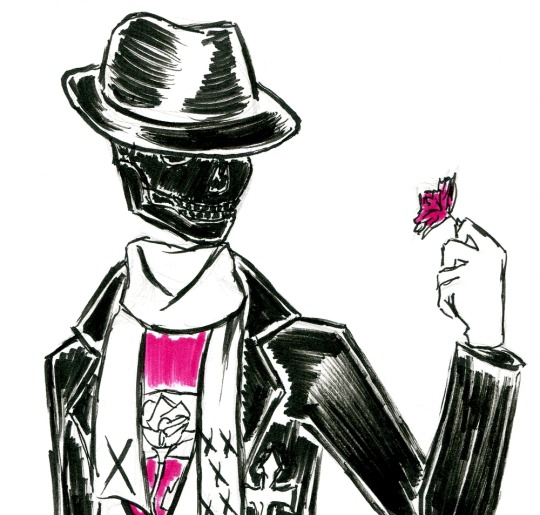
Justifications below the cut. Also some extremely vague spoilers.
The Bad: The Caligula Effect has major shortcomings in many, many areas. For me, the battle system is clunky and bland (though if I raised the difficulty, I might find it more interesting). The character models are awkward. The environments are repetitive and the levels are too long. And as far as battles go, you are literally just fighting other students – no interesting monster designs anywhere. Those are a few points, but there are definitely more flaws that could be gone into.
But if you've followed me for a while, you know that the games that end up grabbing my attention aren't necessarily the most deserving. So here's what I like:
The 2D art is lovely. The characters have changeable portraits based on their emotions, as per Persona, but the menu features two full-length portraits for each character, Go-Home and Musicians alike. The elegant, silvery art style is gorgeous, and it's a shame it wasn't used more prominently and creatively, rather than the awkward 3D models. The main visual motif is flowers, and to that end each Go-Home member has unique (and highly symbolic) flowers associated with them. When they access their superpowers, each of them is shown with a stake driven through their heart, surrounded by their flowers – a striking and unusual effect. The desaturated colors in the characters' designs make their flowers stand out all the brighter.

And definitely check out each character's status screen because their portraits hint towards their true personalities.
Speaking of which –
Caligula mimics Persona's Social Link system (it doesn't use the term Social Link, but that's what I'll use here), allowing you to grow closer to your teammates on both sides of the ideological conflict. Not all of the Social Links are written equally well – some are more interesting than others – but a number of them are intertwined (even across both teams in the Overdose release) and become very engrossing as you try to figure out how events fit together. And who these people you're working alongside really are.
Like Persona, several of your teammates are motivated by personal trauma. As great as Persona 3 is, it can start to feel ludicrous how many of its characters have dead parents. (In fairness, their traumas aren't just that they have dead parents – but most of them have at least one dead parent and it gets old.) In Caligula, the traumas feel varied and more unexpected, touching on subjects I haven't often seen in JRPGs. For example, I guessed Mifue's trauma fairly early on, but was surprised at how seriously it was eventually depicted. I thought I figured out Ayana's quite quickly, only to have my theory pulled out from under me. Izuru's Social Link ended up shocking me at one point, then made me more thoughtful as I listened to him analyze himself. I've heard Kotono's arc wasn't universally liked in Japan, but I was really happy to see her specific backstory handled, even if it made her more complicated than a typical pretty girl in a high school game. And when it came to Shogo's, I immediately started to downplay the seriousness of his past – only to be proven quite wrong.
And it's not just the heavy stuff. Going through characters' Social Links (and talking to them on the game's texting feature) often changed how I felt about them. When I first met Suzuna, I was instantly fed up with her timid personality and thought I was going to hate her. She ended up being one of my favorites, the change not so much due to big story events but because of small details about her personality. I disliked Ayana and Naruko early on, but softened as I got to know them. This is especially noticeable with the Musicians. If you only encounter them as the Go-Home Club, they'll be rather flat, easily dismissed antagonists. Getting to know them on their own turf reveals characters who are often as fleshed out and interesting as the main cast. And again I was surprised at who I ended up really liking, like Sweet-P and Shonen-Doll.

Another, more subtle, thing I enjoyed – in different Persona games, a number of your teammates are very cool people. Eriko's mysterious and interested in the occult, Mitsuru's this unattainable school celebrity, Akihiko's a star boxer, Ann's a professional model, Yusuke's an artistic prodigy, Rise's a literal teen idol. There are certainly talented people among your teammates in The Caligula Effect, but for the most part, you're all nerds and losers. And that goes for the villains as well. Most of the characters aren't that socially impressive, either because of their personalities or they have very powerful reasons for turning away from the mainstream. And while many of them grow and change, they're not really wish-fulfillment characters.
One last thing I want to touch on – this virtual utopia our characters are struggling in is rather deceptive. Everyone within it takes on the role of a high schooler, but this doesn't always reflect who they are in reality, adding another layer of interest for me. Without going into specifics (because one of the most fun things for me was trying to figure out who people really were), a (vague) number of these characters are adults, not teenagers. And many of them are motivated by very adult concerns, such as dissatisfaction with their professions and questioning their positions in their adult lives. One of the main tensions of the game is whether it's better to direct yourself as an adult in the often-disappointing real world or whether it's better to remain a child free from responsibility in the virtual world. Despite all the game's high school trappings and tropes, I found myself wondering who the intended audience really was.
Caligula's main story is pretty flat and basic, much less sophisticated than the plots of the Personas or Tokyo Xanadu. But because of the characters and the multitude of B-Plots you go through with them, the game still has a compelling, and even adult, quality.
It's not a great game. I can't stress that enough. The first handful of hours are terrible. I think one reason I'm so into it is that I entered the game with very low expectations. But its characters have a lot to offer, and for me that ended up being the heart of the game. So I liked it.
#the caligula effect#lucid#suzuna kagura#(being the pictured characters)#meta#rayless reviews#i'm not going to do game reviews as a regular thing#but i had a lot of thoughts after beating this game#and may post a few more thoughts in the future#persona#tokyo xanadu#mine
8 notes
·
View notes
Text
“Reverse/Rebirth” revisited
I’ve mentioned a few times now that, in this look back at the Kingdom Hearts series, I’ve finally come to like Riku as a character. That’s in part due to seeing everything in context again several years after my last play-through, but another thing that helped put things into perspective was a LP by YouTube’s Frustrated Jacob. He worded Riku’s story in a way I could finally grasp: that Riku sees himself, and is treated, as mature and trustworthy, but ultimately proves himself to be selfish, insecure, and childish, while Sora is a more childlike underdog who ultimately proves to be mature, responsible, and heroic. Riku does, of course, redeem himself after realizing to what end he’s being used for, and with the context straight in my head, I could finally appreciate that story on an emotional level, instead of conceding its technical merits but remaining cold to Riku himself.
Given all that, I was curious to see if my opinion on Reverse/Rebirth would change after playing though it again. As it turns out, it did change - for the worse.
My issues with the gameplay remain. I just couldn’t enjoy the card-based battle system without having the option to customize. Besides taking a lot of the fun away, it made troubleshooting against challenging bosses (which, I’ll admit, there aren’t many) more hassle than it needed to be. Riku’s lack of magic or summon abilities is another thing that just makes for a less fun game. The limited number of sleights available in Dark Mode gave some little bit of variety, but I so rarely needed to use Dark Mode that it wasn’t worth dragging out battles to build up the meter.
Riku does pack a lot of power in his attacks - that was the reason I hardly ever needed Dark Mode. This makes much of the game a cakewalk, even compared to the later stages of CoM proper, but the difficulty spike in the boss battles with Zexion and Ansem are ridiculous. The decks you get against them are pathetic, and their abilities are overwhelming. Having a real challenge was a nice change of pace at first, but the disparity is too great.
And I still can’t get over the way this game’s “worlds” are structured. My memory of this game was that Riku got all the same world cards as Sora, in reverse order (except for the last three floors), which would at least make some sense, tying into the “reverse” of the title. But they aren’t strictly in reverse order; some of the Disney worlds aren’t even in the same set. And Riku wasn’t in most of those worlds. There shouldn’t be any memory cards of those places for him. The game does acknowledge this, in a sense, by leaving out any Disney characters from these worlds. But that’s another problem with R/R: nothing happens for most of it. If the Disney worlds in CoM didn’t tie in to the larger story except in a thematic sense, they at least had self-contained plots that gave you something to follow. Riku just wanders through rooms here, to no aim.
Like with CoM, there was a missed opportunity to give the Disney worlds more connection to the plot. Riku was in Monstro, Neverland, and Hollow Bastion, after all, and spent most of KH I in Maleficent’s thrall. Having him deal with the memories of that - of his actions, of his alliance with a confederation of Disney villains - would have provided story material and illustrated his dilemma more effectively than cutscene after cutscene with blather about the darkness (and yes, I know this series is notorious for this - but even by KH standards, the word “darkness” is abused to all hell in this game. I’m not sure how they could have avoided that, given what Riku’s story is here, but it was still excessive). At the very least, Maleficent should have been a recurring character in Riku’s memories. Wasting her as the start-up boss is still an unfathomable decision to me.
Really, the lack of content is enough to make one wonder if this story warranted its own title. To call it the “B side” to Sora’s story in CoM suggests more than it can provide. If it had been cut down to just those three Disney worlds Riku actually visited, with more story content for them and cleaner writing for the larger story, the ten hours the game took (compared to just under 40 for CoM proper) might have felt worth it, instead of rushed and empty. But at that length, I would’ve just presented it as a bonus mini-game to be unlocked after a certain level of completion, not as a B-story you get to play no matter what.
As with CoM, I have to take issue with the villains here. I’m convinced now that his battle in this game is the only reason anyone remembered Zexion well enough to justify giving him a backstory, because there’s nothing else to his character, or to Lexeaus. I may not have liked the villains of CoM, but I can concede that Axel, Vexen, and Larxene are memorable (and no, I didn’t forget Marluxia - he’s off the memorable list for a reason XP). These two are devoid of even one major identifiable personality trait (and I would note that Zexion’s backstory hasn’t solved this problem). I suppose Zexion staging an elaborate illusion of Sora to torment Riku rather than killing him outright might qualify as sadism - if it were played as such, and if Larxene hadn’t claimed that territory, so that whole sequence doesn’t have a lot of foundation. Though I will concede that, prior to the realizing it made no sense, I found the impersonation of Sora an effective story beat that fed well into Riku’s fears.
Of course, the ultimate antagonist in R/R isn’t anyone from the Organization, but the darkness still within Riku, and the trace that “Ansem” left on him. Whether this Ansem is meant to be the real deal, or some residual trace or memory, I was never quite clear, but in any event, the solution to the conflict turns out to be that Riku chooses neither to reject the darkness nor succumb to it, but to straddle the line between light and dark, a trait unique to himself in this series. That’s been criticized as an idea, but I don’t object to it in principle, the same way I don’t reject efforts to move Star Wars beyond a black-and-white conception of the Force. But in execution, there’s a lot wrong with it.
1. With hindsight, we can see that it was never really followed up on. Darkness = evil in the first KH game, and that’s been true for the games that have followed R/R. For this idea to really work, it would’ve needed follow-up that it never got.
2. That this idea comes to Riku from Namine of all people feels extremely abrupt. Granted, if I were writing a story about someone learning that light and dark sides to their soul could co-exist extrapolated into a fantasy setting, I would want the revelation to feel abrupt at first glance, with hindsight showing seeding throughout the story. That seeding isn’t here, and Namine is an awkward choice to deliver the message to Riku given that they have no connection prior to this point in the story.
3. Namine’s line about how “no power can defeat [Riku]” makes no sense to me. He’s defeated throughout these games by light and dark powers. A lot of the wording of the dialogue on this plot point just seems designed to try and make Riku seem more special and marked by destiny. Of course, this ignores the element of the first game where Riku appearing to be the person suited to a great destiny was part of the problem.
4. On that note - as has been pointed out to me by @themattress, Riku declaring himself unafraid and accepting of the darkness, and using it to ends he found right, was what led him down the path to possession in the first game. Now, I do think there’s reason to doubt his bravado in that scene in KH I; his pretense at maturity and confidence both fall pretty quickly when his jealousy and paranoia of Sora set in. But it is true that Riku accepts, embraces, and abuses the darkness in KH I, and what fears he does have aren’t tied to that. I still wouldn’t say I object to R/R trying to twist that idea around in principle, but just as it needed more follow-up to work properly, it needed more set-up than this game provided to work properly.
In a way, though, the biggest fault with this plot point is that it doesn’t really impact Riku’s behavior all that much. I’ve seen some critiques that praise Riku’s development in this game over Sora’s, and I can’t say I understand that. You can like Sora’s story in CoM or not, but he experiences a lot and undergoes dramatic changes over the course of that story. Riku here is pretty static. While I’m now fully on-board with his arc in KH I, I’m afraid I still find him rather bland here.
To be honest, the best bit of story content in R/R IMO isn’t even concerned with Riku; it’s a cutscene that expands on Sora’s story. It’s the scene I wanted in that story, where Namine calls herself “the shadow of Kairi” and explains how her messing with Sora’s memories of Kairi can’t truly erase them. When the best story beat in the B-story is an expansion on the A-plot, you know you have trouble.
And then there are the things about R/R that are just weird - turning Riku and Zexion into bloodhounds comes to mind. Has that whole “scent” business ever really come up sense?
So, that’s where I stand with R/R now: it’s unimpressive fare and wasted potential. Playing through it again has actually forced me to give some new credit to Dream Drop Distance. I still consider that game a worse story, and more damaging to the series overall, but there are two points I must concede to it:
1. It handled two player characters much better than CoM and R/R did. Whether they were any good or not, the game gave Sora and Riku each stories to follow in the Disney worlds, enough content to fill out a full game, and tied them together in such a way that one didn’t feel like the superfluous B-side to the other.
2. I thought DDD was where the retconning of Sora and Riku’s friendship began, but it was here in R/R, with Riku describing Sora as someone who “always did as he pleased” and setting up the idea of he, Riku, being the responsible one. Granted, he’s being rather jokey when he says this, but accusing Sora of being the lazy one while he does all the work just rubs me the wrong way. When I thought that DDD was the one to introduce this change, I could at least credit it that such a retcon helped explain their dynamic in that game. But now I just can’t understand why they went down this road. Everyone who played the first game spent the first few levels on Destiny Islands, working on the raft as Sora. And Riku complaining about anyone else “doing as they please” at this point in the series, when we’re only one game removed from him plotting to run away and never come home (embracing the power of darkness to do so) while Sora took on the responsibility of being the Keyblade Master without protest is really pushing it.
Well, that’s that. No need to revisit that game for a long time. Now, on to KH II - the one I’m most interested in replaying. Will it hold up as well as KH I did? Only time will tell...
6 notes
·
View notes
Text
607-608: "A Fierce Battle Gets Heated! Luffy vs. Caesar!" and "A Mastermind Underground! Doflamingo Makes His Move!"
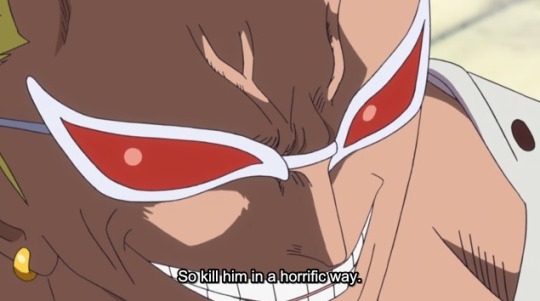
This one pulls no punches, does he?
Chalk up another pair of excellent episodes with a satisfying payload of reveals.
The major one? Well, it’s obvious, right? Doflamingo has sidled out of the shadows and is now fully involved in the plot. The mysterious thing Law claimed would shake the New World is a substance/object called SAD which is being manufactured by Caesar on Punk Hazard. Not only that, Caesar Clown is like the Colonel Freaking Sanders of the OPverse, in that he is the only person who knows the eleven secret herbs and spices for making SAD. He also turned Foxfire’s kid into a dragon.
(Or at least I think he did. That could have been Vegapunk but I don’t think Vegapunk is cruel enough to do that.)
Still have no idea what SAD is, but I will kick back and let the plot guide me slowly towards the answer because I cannot even begin to speculate.
SAD: Eleven Secret Herbs and Spices
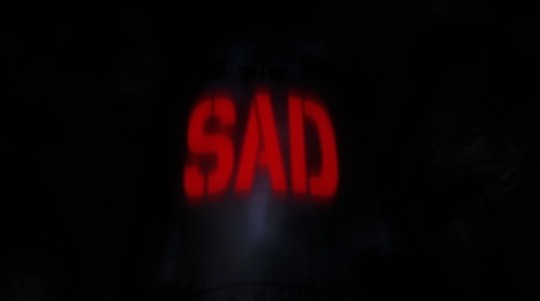
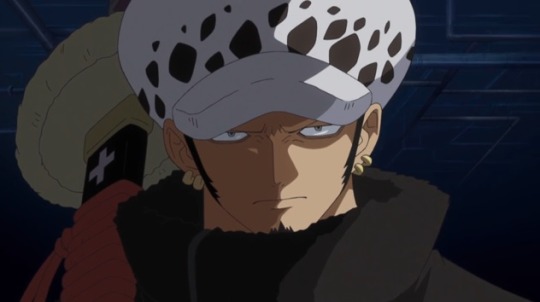
Law is such a plot catalyst.
He didn’t do much across 607 and 608. Well, not to my eyes, anyway.
All he did was walk down a dark corridor with purpose, stand in front of a big, important-looking door, trigger an alarm opening said door, and entering the room with a smirk, while declaring: “Yes. This will shake up the New World.”
Once I finished 607 and 608, I realised Law is probably in deep shit because a lot of powerful, angry characters are out for his blood. He is also at a major disadvantage until he reclaims his heart from Vergo (as he told Smoker via flashback). Because of Law, the plot is now speeding along at a cracking pace.
Caesar Doesn’t Realise He’s Just Issued Luffy a Challenge
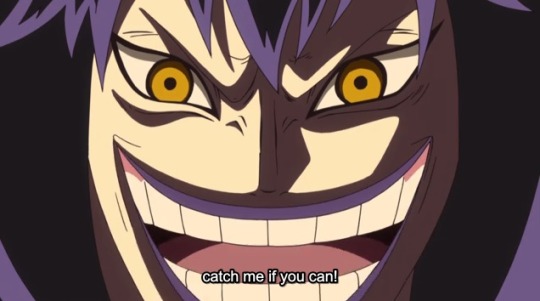
The action picked up where it left off. Luffy wound up a blistering punch that hit Caesar so hard I performed a sharp intake of breath and cringed for him.
Still, to give credit to Caesar, he totally tanked the direct hit. The madman got up again just in time to see Luffy speeding towards him, arms outstretched. That pesky rubber boy just insists on trying to grab him! There was a spot of hilarious, “GOT YOU!” “HA, NO YOU DIDN’T!” Then Caesar got fed up, set the place on fire and asked Luffy a really important question.
“Why are you attacking me?”
That was so damned funny to me. They’ve been knocking seven bells out of each other for several episodes now and Caesar had no idea why Luffy decided to noise him up.
Luffy’s answer was even funnier.
“I don’t know why but I’ve been told something fun would begin if I kidnap you!”
If there is such a thing as a Top Ten Luffiest Moments Compilation, that line has to be in mix surely? Why are you fighting me? No idea, but I was promised fun if I do. I have no words. xD
Caesar made a last ditch attempt to dissuade Luffy from an outright punch-up. Probably because he knows Luffy uses haki and that makes him vulnerable to suffering more gut-punches. “You formed an alliance with Law, right? He told you do kidnap me. You can’t trust him. I’m sure he’ll betray you. Don’t do it.”
Luffy’s response? “DON’T TELL ME WHAT TO DO!”
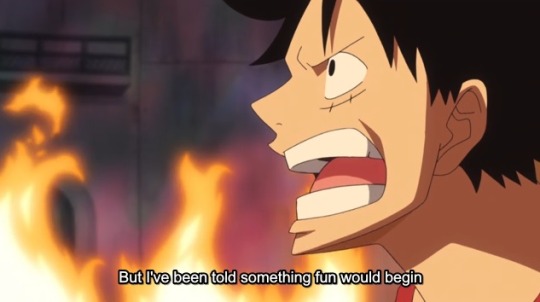
Negotiations broke down rather swiftly after that. Caesar broke out his karakuni (oxygen removal) technique. It has a limited range, which is good because it would be too overpowered otherwise. Luffy dodged and Caesar tanked another punch right in the word hole. But Caesar is such a mad bastard he actually closed the distance, got right up in Luffy’s face, deprived him of oxygen and slashed at him with a flashy, flaming hot blue sword technique. For good measure, he resorted to a few gastanets to hold Luffy at bay.
Caesar’s fighting style is suprisingly aggressive. xD
Still, when Luffy could huff some oxygen into his rubbery lungs, he was too fast for Caesar. Luffy’s response to Caesar’s aggressive style? “HEY YOU! STAY AWAY FROM ME!” At which point he booted Caesar in the face and he went flying.
“Damn it, that hurt!” Caesar seethed. (He hates haki users, ha!) But he still got back up.
Luffy realised he needed to catch Caesar quickly before he was choked to death. I still think if he hits Caesar hard enough, he’ll be able to do it no bother. It’s just a matter of getting Caesar on his own because Monet is under strict orders from Doflamingo to Not Let Anything Happen to his Cash Cow Scientist.
It was annoying because Luffy was *so close*. Caesar was willing to let him go because he wanted to show the brokers the power of Shinokuni and was impatient to get back to his experiment. But Luffy stretched his head back, took a deep breath and readied his armament hardening. (Did Vergo use Armament Hardening on his knife stick weapon when he beat up Law?)
He yelled, “If I can’t breathe, I’ll kick your ass in one breath!” (Nice line, Luffy.)
Caesar yelled back, “You want to die, don’t you? Then I’ll give you the death you chose for yourself. Go to hell, Strawhat!”
Caesar almost crumbled. Almost. He dodged the headbutt, but the incoming Jet Gatling was too much. He was saved at the last second by Monet.
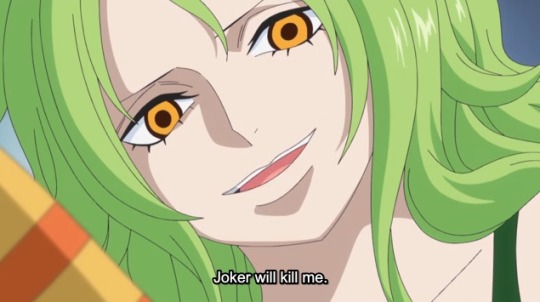
It turns out Monet is in possession of the Snow Snow Fruit, can control snow at will and - from what I’ve seen so far - she seems pretty adept at using it.
She was impressed that Luffy’s hits cracked the solid ice wall she had used to shield Caesar. My jaw dropped when Caesar’s head popped out from the ice shards and he was ready for another round.
Monet must have stepped in because she knows when the red mist descends, Caesar does dumb stuff (like persisting in squaring up to Strawhat Luffy like a belligerent drunk in a bar fight). As Caesar is not allowed to do dumb stuff leading to him being kidnapped, she appealed to his scientist ego.
“You must go, Master. This fight is meaningless.”
Caesar snapped out of his red mist rage and seemed to remember what was at stake. He laughed and swept away. “Goodbye, Strawhat! Be as wild as you want. I already have an idea of how to make you people test subjects. Look forward to it!” Nice to see Caesar can swallow his pride and stick to a plan, even if he needs a nudge.
Of course, Luffy went after him, but Monet wrapped her talons round his shoulders. Access denied. If anything happened to Caesar, Joker would kill her.
“That’s the bird guy I saw in the war, isn’t it? Who is he?”
Monet almost revealed everything. Almost. I sense a pattern emerging here. xD “He wants to kidnap Master and wants SAD to be...” She smiled, said no more, but added, “Now I know what you guys are going for.” (Referring to Law and their alliance plot.)
It was round about that time that the call from Doflamingo came through. They were to take out Law and Strawhat - but be extra careful around Strawhat as he was able to use Conqueror’s Haki (Doflamingo must have spotted that at Marineford.)
At the moment, Luffy is battling Monet. I’m guessing he’ll defeat her pretty quickly, even though she didn’t seem too phased about his Conqueror’s Haki. Then he’ll be running like hell through the labyrinthine complex hunting for Caesar again. Business as usual!
Sanji is Not Vergo’s Biggest Fan
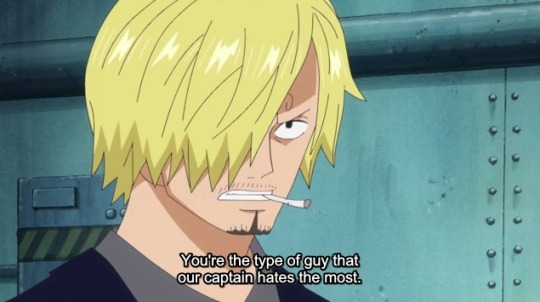
This was strangely interesting clash. Not on account of Vergo. It was mostly Sanji. For all the pasting he gets for being pervy (among other things), he shows moments of genuine concern and consideration for his fellow human beings, no matter what side they are on.
While Sanji and Vergo battled, the G5 Marines looked on in shock. Why was Black Leg/Foot/Limb/Appendage Sanji helping them? He was a pirate. Worse still, the gas was seeping through. Even though he’d knocked Vergo into a wall, Sanji told the Marines to run. When Vergo unfolded himself from the impact crater, he readied a final blow - but then the distress call from the SAD Manufacturing Room intervened and he ducked out to pursue Law.
Sanji about to run himself before he spotted two unconscious Marines. He couldn’t help but risk his life to rescue them. Then, when the Marines showered him with praise, he was... well, he was Sanji-ish about it. “I only take praise from girls, etc.”
But when the Marines thanked him for helping them against the “Impostor Vergo” and when Tashigi kept up the ruse to as not to hurt her men, Sanji went along with it - even though I’m convinced he knows about the betrayal, as he told Vergo: “You’re the type of guy that our Captain hates most.”
So Sanji decided to spare the feelings of these Marines he didn’t know because he sensed, just like Tashigi did, that the truth would crush them.
That was a pretty nice thing to do, actually. Humanity points there for Sanji. And leadership points for Tashigi, into the bargain.
But... while Sanji was being a reluctant hero, Vergo was bouncing through the passage towards Building D. And someone very important was on the line!
The Feathered One Has Finally Arrived!
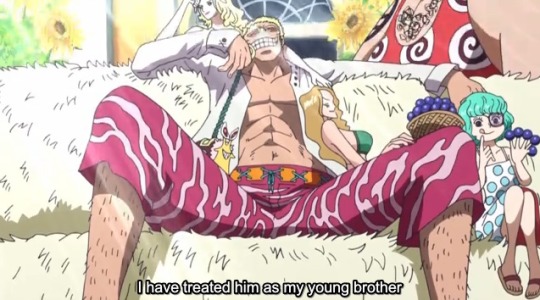
While the rest of the cast are currently swimming in the poison-gas-filled hell that is Punk Hazard, Doflamingo (or Doffy as his pals call him) has been living it up on the beautiful island of Dressrosa.** A calm blue sea. Colourful flowers. Architecture that looks Italian. Dressrosa is a nice place. A veritable paradise.
**(Or at least I think it’s an island. I have seen the Dressrosa arc in the dropdowns on CR and every other arc is a location, so I’m going with island for now.)
Vergo was in the middle of his report: “Trafalgar Law is in the SAD manufacturing room. No doubt he is betraying us.”
Doffy was not pleased with the news. “I have treated Law as my young brother and watched over him as he grew up. What a shame. He’s a the SAD manufacturing room, huh?”
At that point, a gun-handed lady staged a series of violent interruptions that did not phase Doflamingo in the slightest. Her swipes barely even broke his concentration.
“Here’s what I’d do if I were Law. First, I’d destroy that room-- And kidnap Caesar? No. I’d just kill him. Because Caesar is the only person in the world who knows how to produce SAD. But if Law does such a thing, I’ll be in trouble, Vergo. If Caesar is killed, no one else can produce that gas. Then it will ruin my business. And what would happen next if I got into such trouble? Misfortunes never happen singly.” (An oddly fatalistic viewpoint you have there, Doffy.)
A big dude tried to convince Baby 5 (the angry lady) to chill. “You can’t do that to the Young Master,” he admonished. (Young master. Interesting way of referring to Doflamingo. Is there an older master?)
An older lady asked Doflamingo what he would do with “that cute boy Law-chan.”
An older guy answered, “You know. Law is rebelling against us.”
Doflamingo ignored them all and gave Vergo his orders. “I need you to take care of Law. I wanna make him wish he was never born. So kill him in a horrific way.”
Vergo eventually offered to cut off Law’s ear and deliver it to Doflamingo.
“I look forward to seeing it!” Doflamingo replied (hilariously, as if Law’s ear were a new car or minor purchase).
He dealt with Baby 5 using his weird puppetmaster/control power and called Caesar and Monet. Once he warned them about Luffy’s Conqueror’s Haki, he announced Baby 5 and Buffalo would be sent to Punk Hazard. They all needed to come to Dressrosa at once.
Oooooooooooh, things are heating up! Now I’m wondering if Luffy and Law will even succeed in kidnapping Caesar. Doflamingo might show up with his big guns and snatch back his Cash Cow Scientist. Then again, that will mean Luffy might need to take an L. I don’t wan’t that to happen yet. It’s too soon after Marineford (well, it’s been over two years in the OPverse, but still.)
Not sure how this will unfold, but I am now majorly hyped for this plotline! :D
Twist Level: M. Night Shyamalan
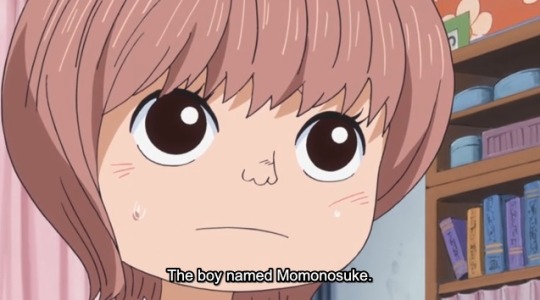
Must admit, I have been thinking this Foxfire/Lost Son plot was kind of lame for a while now. It’s nowhere near as gripping as the Caesar/Law/Doflamingo conspiracy (to be fair, that’s a hard act to follow). Even the experiment kids have lost their plot shine in comparison.
Every time the action cut to the kids, or to Foxfire, I’d been thinking, “Okay this is nice but I need more Caesar, Luffy, Law or characters related to that plot strand, plz.”
But Oda suddenly merged them and threw in a major twist that has wrenched back my interest. The little dragon that has been harrying the Brownbeard Express (and hurting Brook’s feelings, HOW COULD YOU? xD) turned out to be Momonosuke: Foxfire’s own son!
Worse still, the Strawhats teamed up to beat the poor, little dragon and Foxfire almost kicked it to death because he bears a serious grudge against dragons. He kicked it to the point Brook actually said, “Dude... what did dragons do to you? You need to chill.” Foxfire almost sliced its scaly head off (his own son’s head!) Luckily, Nami shouted at them to get back on or they’d be left behind.
Once the Dragon Son was felled, the Brownbeard Express ran straight into Monster Chopper, who was desperately trying to wrangle the Candy-Addicted kids. Mocha is off on a mission to dispose of all the candy in the Biscuit Room. I foresee a lot of angry kids in the imminent future.
Another kid was the one who spilled the twist, right at the end of 608. She was about to head back to the Biscuit Room after examination and she mentioned a “secret room where no one is allowed to go.” Where the boy Momonosuke went and transformed into a dragon.
His own dad almost cut his freaking head off.
Can you believe that?
Such a great plot right now.
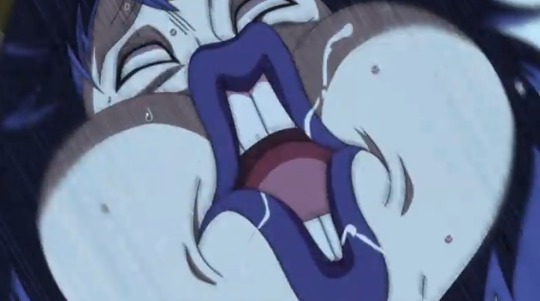
All around me are familiar faces...?
#one piece#neverwatchedonepiece#nwop#never watched one piece#donquixote doflamingo#caesar clown#trafalgar law#monkey d. luffy#roronoa zoro#sanji#usopp#nami#tony tony chopper#nico robin#brook#monet#vergo#vice admiral smoker#captain tashigi#baby 5#buffalo#foxfire kinemon#momonosuke
54 notes
·
View notes